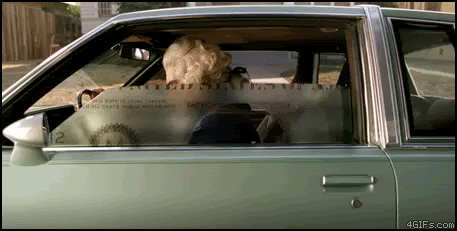First, start by installing 4 valves into your test head with the lightest valve spring you have. In my case, I used the inner valve springs only from the Skunk2 Pro series valve springs. This keeps the amount of tension you have to keep in the chain to a minimum. Less tension in the chain makes things easier to turn.
Then, you need to rig up something like this to keep the cams in time relative to one another. With a little ingenuity, you can make it happen. Note that I have the intake cam gear pinned at 50deg. I have a custom cam gear that allows me to check clearances at individual cam angles, but that's currently for my eyes only. :p
Here's a shot of the intake valves at full lift.
The exhaust valves at full lift.
Now we start to measure valve to valve (v2v) clearance. I started with the lash set at .010". I didn't have feeler gauges thick enough, so I just stacked two together.
The v2v on my Skunk2 stage II cams, VTEC lobe @ 50deg intake advance and -5 marks on the exhaust cam gear.
Now we re-check at 0 lash.
As you can see, the v2v goes WAY down with valve lash. Let this be a warning to you people out there that like to lash things ultra tight on big cams.
Tomorrow, I should have pictures up from claying the motor.















 Reply With Quote
Reply With Quote











 How much has the head been shaved?
How much has the head been shaved?




 Flipped the head over, layed down the gasket, and enlarged the combustion chambers slightly. The piston then slid up inside it perfectly
Flipped the head over, layed down the gasket, and enlarged the combustion chambers slightly. The piston then slid up inside it perfectly  Remember, this was a budget build with basically only time involved using spare parts.
Remember, this was a budget build with basically only time involved using spare parts.
 [/URL]
[/URL]



